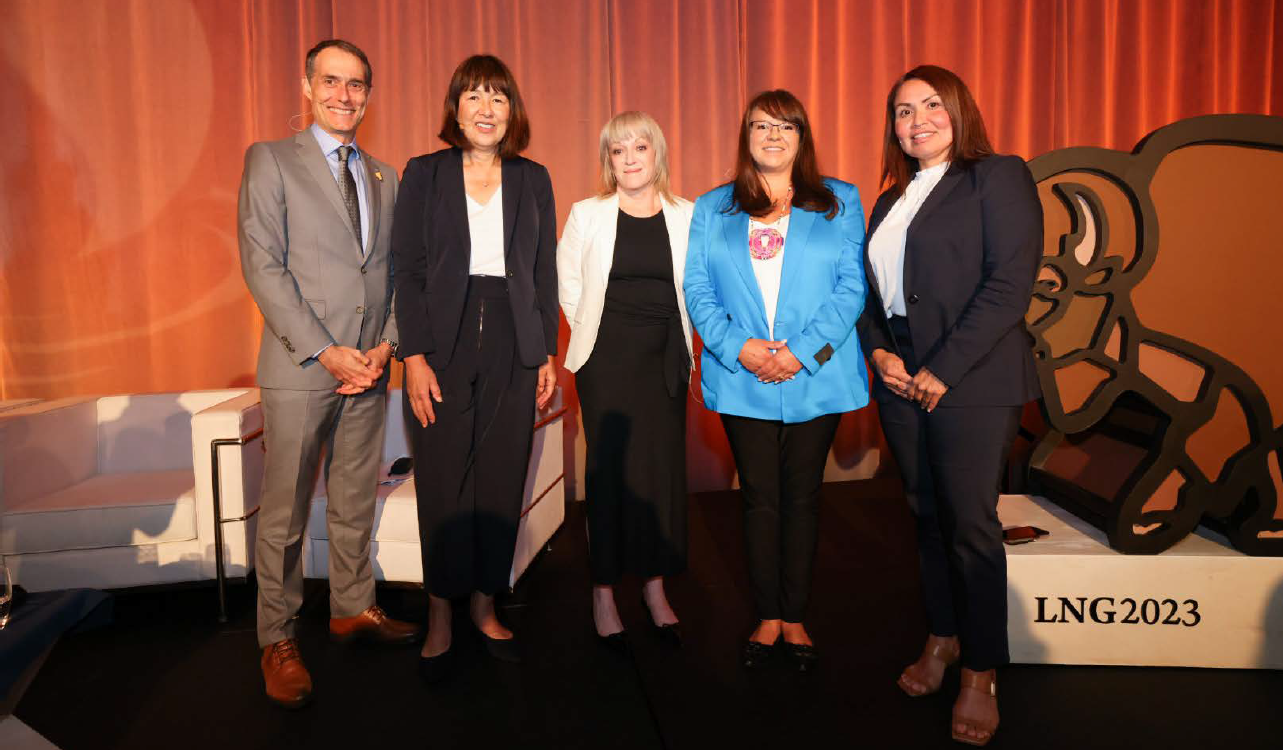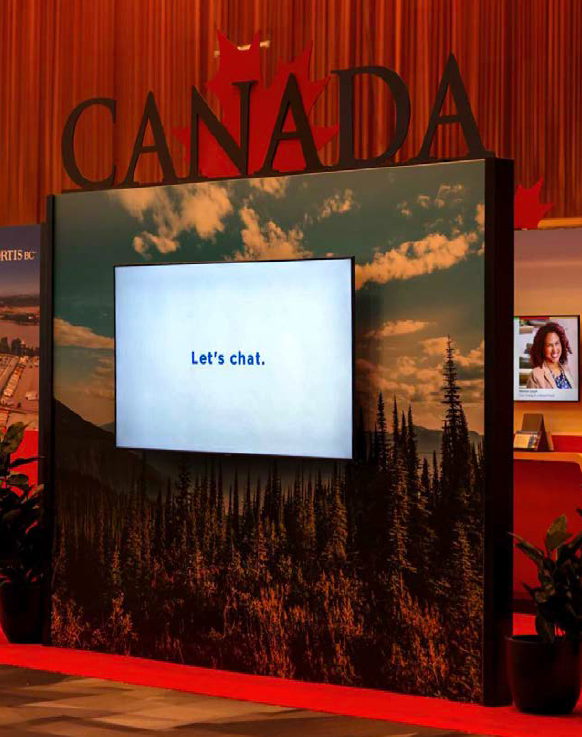LNG2023 a showcase for Canadian gas and LNG [Gas in Transition]
Although it has yet to produce its first home-brewed cargo of liquefied natural gas, Canada’s LNG aspirations headlined the recent International LNG Conference 2023 (LNG2023) in Vancouver, on the country’s west coast.
Originally scheduled for the spring of 2022 in St Petersburg, but pulled from there by the International Gas Union in the wake of Russia’s invasion of Ukraine, LNG2023 brought forward all that makes Canadian LNG unique: robust environmental performance, with the Shell-led LNG Canada project set to begin producing the world’s cleanest LNG in 2025 and strong indigenous participation, with Cedar LNG, the world’s first majority indigenous-owned LNG export facility, moving to a final investment decision by Haisla Nation and its partner, Pembina Pipeline.
|
Advertisement: The National Gas Company of Trinidad and Tobago Limited (NGC) NGC’s HSSE strategy is reflective and supportive of the organisational vision to become a leader in the global energy business. |
Canadian Gas Association (CGA) CEO Tim Egan opened the conference in leadership dialogues with Jason Klein, CEO of LNG Canada, and Crystal Smith, chief councillor of Haisla Nation and a strong voice for indigenous participation in LNG developments.
Klein said LNG Canada’s cargoes will be 50% less emissions intense than the global average, and 35% less intense than the best plants operating now. That reflects a number of factors, including access to abundant supplies of low-cost and low-carbon natural gas from the Montney formation in northeast BC, and access to hydroelectricity from the provincial grid operator, BC Hydro.
“We are really able to lean on the resources of BC Hydro to provide clean electricity for all of our facilities,” Klein said. “We also benefit from the pinnacle of LNG design, and from a much cooler climate.”
While the first 14mn tonnes/year of phase of LNG Canada will enter service in 2025, its partners are already evaluating phase 2, which would double the output of the facility. All the permits are in place for that second phase, but Klein said LNG Canada must still manage stakeholder expectations around cost competitiveness, affordability, timelines, emissions and other factors.
“In that vein, we are evaluating alternatives to potentially further improve on our world leading design through additional electrification, as and when sufficient reliable power can be provided,” he said. “We are having really good discussions with the government and BC Hydro about the infrastructure required to make that happen.”
True partnerships
Klein also said LNG Canada and its consortium partners – Shell, Malaysia’s Petronas, PetroChina, Korea Gas and Japan’s Mitsubishi – bring a wealth of global LNG expertise in Canada, and were instrumental in paving the way for the next wave of Canadian LNG, led by the Cedar LNG project, which will be located on Haisla traditional territory not far from the LNG Canada site at the head of Douglas Channel.
LNG Canada is now about 85% complete, and in the nearly five years since its partners made a final investment decision on the project in October 2018, much has changed for the host Haisla Nation, Smith said.
“That project has immensely changed my community in the last five years,” she said. “We are talking about being at the table right from the beginning, actively participating in the project, and benefiting from revenue sharing that we are able to invest in revitalising our culture and our language.”
Ten years ago, before LNG Canada set the bar high for indigenous participating in Canadian industrial projects, First Nations throughout the country “sat on the sidelines” and watched as others prospered from projects on First Nations lands which impacted not only the environment but also indigenous cultures.
“Now we are in a true partnership with LNG Canada and majority owners in our own project, Cedar LNG,” Smith said. “We truly feel that these projects are a part of the solution.”
Sharleen Gale, chair of the First Nations Major Projects Coalition, shares Smith’s passion for indigenous participation in natural gas and LNG developments. As chief of the Fort Nelson First Nation, she has seen first-hand how these developments can pave the way for economic reconciliation.
“I know that by working together, we can make this dream come true.”
And Christine Kennedy, CEO of Woodfibre LNG, a 3.1mn tonnes/year facility set to begin construction on Squamish Nation land just north of Vancouver, said indigenous participation in major projects is “absolutely” essential.
“It’s one of the building blocks to be able to build a project in the first place,” she said. “It's critical all the way through from the early planning and design stages right through the regulatory cycle and into construction.”
Woodfibre LNG is unique in that it is the first, and so far only, LNG export facility in the world with indigenous environmental approval. Alongside customary environmental assessment approvals from federal and provincial authorities, the Squamish Nation itself issued an environmental certificate.
That level of indigenous engagement, FortisBC CEO Roger Dall’Antonia said, is imperative for any Canadian LNG project to proceed.
“We have set a very high standard, and one of the things that has evolved over time is making sure that impacted communities are at the table and ensuring that their interests are considered,” he said. “The case for indigenous participation in projects, I think, is absolutely necessary.”
Clean and green
Far to the north of Vancouver, close to the BC-Alaska border, Rockies LNG Partnership is working with Nisga’a Nation and Houston’s Western LNG to develop Ksi Lisims LNG, a 12mn tonnes/year floating LNG facility that will be net-zero when it begins producing LNG by 2030.
If LNG from Ksi Lisims LNG or any of the other Canadian LNG projects now under development had been available in 2022, when Russian piped gas came off the market, a dramatic increase in emissions from Asian coal-fired power plants could have been avoided, Rockies LNG CEO Charlotte Raggett told the conference.
Raggett said 130 gigawatts of electricity were added in Asia as a result of the increase in coal-fired power.

“So that 130 gigawatts represents roughly two times Canada’s total emissions,” she said. “If that had been Canadian LNG, we could have reduced the emissions footprint of that coal-fired power generation by half – 600mn tonnes/year – which is just short of the entire CO2 emissions of Canada.
“To put that in perspective, we could have avoided a Canada’s worth of emissions if we would have had more LNG on the water,” she said. “It’s a real opportunity, I think, to put more Canadian LNG out there, because of carbon performance and the challenges getting it there.”
Governments
While Canadian LNG has the environmental bona fides to make an impact on global LNG markets, and the indigenous participation to ensure economic benefits stay at home, what it has lacked is significant support from the Canadian government, which is actually pushing to limit oil and gas developments as a way to bring down Canadian greenhouse gas emissions.
But even that may be changing: in a keynote address to conference delegates, Randy Boissonnault, Canada’s associate minister of finance in Prime Minister Justin Trudeau’s Cabinet, said Canada needs an “at-scale” LNG economy to keep pace in the global climate change fight.
“The world's major economies are moving at an unprecedented rate and pace to fight climate change, retool their economies and build the net zero industries of tomorrow,” he said. “Canada must keep pace because we cannot afford to fall behind – that is why the development of an at-scale LNG economy is a strategic priority for Canada.”
Boissonnault’s message was the strongest expression of support for Canada’s LNG aspirations yet from the federal government. Last summer, as Germany sought to source more natural gas from Canada, Trudeau said there was no business case for delivering Canadian LNG to Europe, and instead suggested Germany pursue hydrogen opportunities in Canada.
Since Russia’s invasion of Ukraine in February 2022, the world has realised the need to work together to eliminate energy poverty, enhance global security and maintain a strong focus on effectively combating the climate crisis, Boissonnault said.
“In this context, Canada is well positioned to be a stable and reliable global supplier of choice,” he said. “We…have the ability to produce LNG with the world’s highest environmental standards and lowest emissions.”
Alberta Premier Danielle Smith, in her keynote address on the final day of the conference, suggested Ottawa’s stand against LNG may be softening. In recent meetings with Trudeau, she said “both agreed on the necessity of assuring that phase 2 of LNG Canada proceeds.”
“We want to build out the next 2bn ft3/day-plus of LNG sooner,” she said. “We also had a very positive discussion of LNG and ammonia and hydrogen and the need to look at how all three governments can clear the way for investment, job creation and emissions reductions while helping to meet global demand.”
BC, of course, is already on board, she said, noting discussions with David Eby, her BC counterpart, on opportunities the two provinces share from continued growth in LNG developments, many of which will draw gas from the Montney field, which straddles the Alberta-BC border and holds some 4,500 trillion ft3 of recoverable gas reserves.
“Buyers are looking specifically to Alberta, home to about two-thirds of Canada’s natural gas production,” she said. “But while buyers are looking to Alberta, the challenge has always been delivering LNG to them. With the right infrastructure in place, Canada would become a sought-after supplier for both Asia and Europe.”




